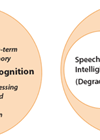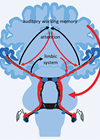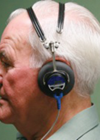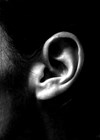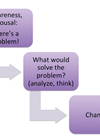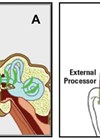Audiology features archive for 2017
The role of metrics in studies of hearing and cognition
Introduction When perceiving sounds in real-world listening environments, older adults encounter several sources of degradation that can interfere with the perceptual process (Figure 1). Target signals (i.e. the sounds that a listener wants to focus on) have specific acoustic characteristics...
The ear-brain connection in cochlear implant users: learning to listen again
While the cochlear implant (CI) has been a tremendous success in restoring hearing to deaf individuals, the implantation outcome still varies across CI users [1]. Some demographic factors, such as duration of deafness, and peripheral factors, such as electrode placement,...
The ear-brain connection: the role of cognition in neural speech processing
Audiologists and other hearing healthcare professionals have become increasingly interested in the importance of cognitive function in the assessment and management of hearing loss, especially in light of evidence suggesting a link between hearing loss and cognitive decline in older...
Could social isolation be a factor in the link between hearing loss and dementia?
In 1802, Beethoven wrote to his brothers Carl and Johann about his hearing loss: “You men who think or say that I am malevolent, stubborn, or misanthropic, how greatly do you wrong me. You do not know the secret cause...
Why screen for hearing loss in adults?
Introduction Hearing loss affects over 10 million people in the UK – one in six of the population. Of over 50-year-olds 41.7% are estimated to have some form of hearing loss. This rises to 71.1% of over 70-year-olds, over half...
Adult hearing screening: consideration for a holistic model
Background Adult-onset hearing impairment is a highly prevalent and undertreated chronic problem that poses a significant burden of disease worldwide [1]. It is usually gradual and diagnosed and managed approximately 10 years after adults have first experienced hearing difficulties [2]....
Screening for hearing loss in primary care
Hearing impairment is one physical disability that is increasing in prevalence in society in general, and in older adults in particular. Approximately 34 to 36 million Americans report suffering from some degree of hearing impairment with the number rising to...
Screening for hearing aid fittings – an approach for primary care
Introduction The communication difficulties related to hearing loss can lead to ‘depression, social withdrawal and problems with employment and access to information sources’ [1]. Furthermore, unmanaged hearing loss is associated with dementia, a poorer quality of life, depression, anxiety and...
Adult hearing screenings has counselling opportunities
Adult hearing screening has its challenges, particularly time constraints. Because the process itself is brief, we could efficiently screen dozens of adults per hour; at events such as health fairs, it’s tempting to march people through screenings as quickly as...
Semi implantable bone conduction devices: challenges and developments
Bone conduction mechanisms and history of bone conduction aids Bone conduction hearing devices work by stimulating hair cells via the bone conduction hearing pathways. These pathways are less well understood than the air conduction pathways, but recent research has shown...
2014: Are today’s implantable devices better than conventional solutions for patients with conductive or mixed hearing loss?
Patients with conductive or mixed hearing loss become candidates for amplification when reconstructive surgery is not viable. Three common amplification options are conventional acoustic devices, such as behind-the-ear devices (BTEs), (implantable) bone-conduction devices and active middle ear implants. The goal...
Long-term outcomes of children and young people with cochlear implants
Introduction Profound childhood hearing loss has a huge impact on early communication skills, the acquisition of spoken language, and hence on educational attainments and employment prospects. Over the centuries, educators of the deaf attempted to overcome the challenge by using...



